_lowres.jpg)
Back
Kigelia africana (Lam.) Benth.
| Family Name: | Bignoniaceae |
| Synonyms: | Bignonia africana Lam., Tecoma africana (Lam.) G.Don., Crescentia pinnata Jacq., Kigelia pinnata DC. |
| Common Name: | Sausage Tree, African Sausage Tree, German Sausage Tree, Cucumber Tree |
Kigelia africana is tree that produces night-blooming red flowers, and bears characteristically long woody fruit that looks like large sausage hanging from the crown. This tree is highly valued and culturally important to the African communities.
Name
Classifications and Characteristics
| Plant Division | Angiosperms (Flowering Seed Plants) |
|---|---|
| Plant Growth Form | Tree |
| Lifespan (in Singapore) | Perennial |
| Mode of Nutrition | Autotrophic |
| Plant Shape | Rounded, Umbrella |
| Maximum Height | 35 m |
| Tree or Palm – Trunk Diameter | 0.6 m |
Biogeography
| Native Distribution | Africa |
|---|---|
| Native Habitat | Terrestrial |
| Preferred Climate Zone | Tropical |
| Local Conservation Status | Non-native |
Description and Ethnobotany
| Growth Form | It is a tree, up to 25 m (- 35 m) tall, and trunk can reach up to 0.6 m diameter. It has a round and spreading crown. The bark is grey and thinly flaky. It is mostly evergreen in Singapore, but can be deciduous during long dry season. |
|---|---|
| Foliage | The leaves are compound, odd-pinnate (imparipinnate) and up to 50 cm long. They can be in opposite arrangement or in whorls of 3 – 4. Each leaf comprises of 7 – 11 leaflets which are elliptic to oblong shaped (about 20 cm long and 6 cm wide). Each leaflet has 7 – 9 lateral veins and sometimes may have rough hairs on both sides. The margins can be entire or distally toothed (serrate) |
| Flowers | Occurring on the terminal ends of the branches, the inflorescence is a branched cluster (panicle), about 10 cm long, and hangs pendulously from the crown. Each panicle contains 6 – 12 flowers which are showy with deep red to purple petals. Each flower is about 5 – 10 cm long. They bloom in the evening, lasting only for a night and is reported to be unpleasantly scented. |
| Fruit | The fruit is sausage shaped (25 – 50 cm long and 7.5 – 15 cm wide). They are woody, greyish brown when ripe and can remain on the tree for up to a year. The fruit can weigh up to 10 kg. Fruit does not split open and the seeds are only released after the fruit has fallen off and decayed. Each fruit contains many seeds which are hard and oval shaped (0.1 – 0.7 cm diameter). |
| Habitat | It is found along watercourses, high-rainfall savannah and shrubland, up to 3000 m altitude. |
| Associated Fauna | Hawkmoths and nectar bats are observed to visit the flowers while elephants and rhinoceros are reportedly observed in Africa to feed on the fruit and disperse the seeds. |
| Taxonomy | Presently, it is the only species in its genus. |
| Cultivation | It can be propagated by seed. |
| Etymology | The genus Kigelia comes from its native Mozambique vernacular name, kigeli keia. Latin africana, refers to Africa, the place where it occurs naturally. |
| Ethnobotanical Uses | Medicinal: In Africa, plant extract is traditionally used to treat an array of illnesses ranging from rheumatism, dysentery, veneral diseases, diabetes, pneumonia, ringworm and tapeworm expellant (Nabatanzi et. al. 2020). Early studies have shown that the plant has potential analgesic, anti-inflammatory, anticancer, antioxidant (Bello et. al. 2016), and anti-malarial properties (Olatunji et. al 2009). Timber & Products: The wood is used to make furniture, joinery, dugout canoes, boxes and shelves. Cultural / Religious: Heritage Trees : There is currently one individual of Kigelia africana listed as a Heritage Tree in Singapore. It can be found at Singapore Botanic Gardens. To find out more about these trees, please visit the Heritage Tree Register. Others: Though the fruit pulp is said to be inedible and toxic, local villagers in Africa sliced and baked the mature fruits before using it to ferment their traditional beer (Nabatanzi et. al. 2020). |
Landscaping Features
| Landscaping | It is widely cultivated as an ornamental tree in parks. |
|---|---|
| Desirable Plant Features | Ornamental Flowers |
| Landscape Uses | Parks & Gardens |
Fauna, Pollination and Dispersal
| Pollination Method(s) | Biotic (Fauna) |
|---|---|
| Seed or Spore Dispersal | Biotic (Fauna) |
Plant Care and Propagation
| Light Preference | Full Sun |
|---|---|
| Water Preference | Moderate Water |
| Plant Growth Rate | Moderate |
| Rootzone Tolerance | Moist Soils, Well-Drained Soils |
Foliar
| Foliage Retention | Drought / Semi-Deciduous, Evergreen |
|---|---|
| Mature Foliage Colour(s) | Green |
| Mature Foliage Texture(s) | Leathery |
| Foliar Type | Compound |
| Foliar Arrangement Along Stem | Opposite, Whorled |
| Foliar Attachment to Stem | Petiolate |
| Foliar Shape(s) | Non-Palm Foliage (Oblong, Elliptical) |
| Foliar Venation | Pinnate / Net |
| Foliar Margin | Entire, Serrate / Toothed |
| Foliar Apex - Tip | Acute |
| Foliar Base | Rounded / Obtuse |
| Leaf Area Index (LAI) for Green Plot Ratio | 3.0 (Tree - Intermediate Canopy) |
Non - Foliar and Storage
| Trunk Type (Non Palm) | Woody |
|---|---|
| Mature Bark Texture | Peeling / Flaking / Papery |
| Root Type | Underground |
Floral (Angiosperm)
| Flower & Plant Sexuality | Bisexual Flowers |
| Flower Colour(s) | Red, Purple |
|---|---|
| Flower Texture(s) | Leathery |
| Flower Grouping | Cluster / Inflorescence |
| Flower Location | Terminal |
| Flower Symmetry | Bilateral |
| Individual Flower Shape | Trumpet-shaped |
| Inflorescence Type | Panicle |
| Flowering Period | A Few Times Yearly |
| Flowering Opening Time | Night (dusk to dawn) |
| Flowering Habit | Polycarpic |
Fruit, Seed and Spore
| Mature Fruit Colour(s) | Brown, Silver / Grey |
|---|---|
| Mature Fruit Texture(s) | Rough |
| Fruit Type | Indehiscent Dry Fruit |
References
| References | Bello, I., Shehu, M.W., Musa, M., Asmawi, M.Z, Mahmud, R. (2016). Kigelia africana (Lam.) Benth. (Sausage tree): Phytochemistry and pharmacological review of a quintessential African traditional medicinal plant. Journal of Ethnopharmacology, 189: 253–276. Grace, O.M. and Davis, S.D. (2002). Kigelia africana (Lam.) Benth. In: Oyen, L.P.A. and Lemmens, R.H.M.J. (eds). PROTA (Plant Resources of Tropical Africa, Precursor. PROTA Programme, Wageningen, the Netherlands. Pp. 98-102. Nabatanzi, A., Nkadimeng, S.M., Lall, N., Kabasa, J.D. and McGaw, L.J. (2020) Ethnobotany, Phytochemistry and Pharmacological Activity of Kigelia africana (Lam.) Benth. (Bignoniaceae). Plants, 9(6), Article No. 753 Olatunji, A. G. and Atolani, O. (2009) Comprehensive scientific demystification of Kigelia africana: A review. African Journal of Pure and Applied Chemistry Vol. 3 (9), pp. 158-164. Rønne. C. and Jøker. D. (2005). Kigelia africana (Lam.) Benth. Seed Leaflet No. 108. Copenhagen, Denmark: University of Copenhagen. Sprague, T.A. (1905). Bignoniaceae. In: Thiselton-Dyer WT (ed.) Flora of Tropical Africa, vol. 4 (2), pp. 516. London: Lovell Reeve & Co. Limited. van Steenis, C.G.G.J. (1977). Bignoniaceae. In: van Steenis, C.G.G.J. (ed.) Flora Malesiana, ser. 1, vol. 8 (2), pp. 114–186. Alphen aan den Rijn: Sijthoff & Noordhoff International Publishers |
|---|
Image Repository
Others
| Master ID | 1687 |
|---|---|
| Species ID | 2980 |
| Flora Disclaimer | The information in this website has been compiled from reliable sources, such as reference works on medicinal plants. It is not a substitute for medical advice or treatment and NParks does not purport to provide any medical advice. Readers should always consult his/her physician before using or consuming a plant for medicinal purposes. |

_lowres.jpg)

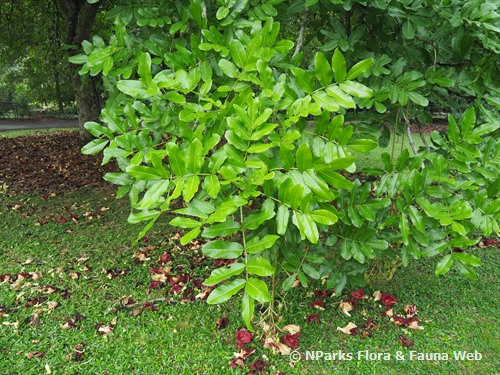
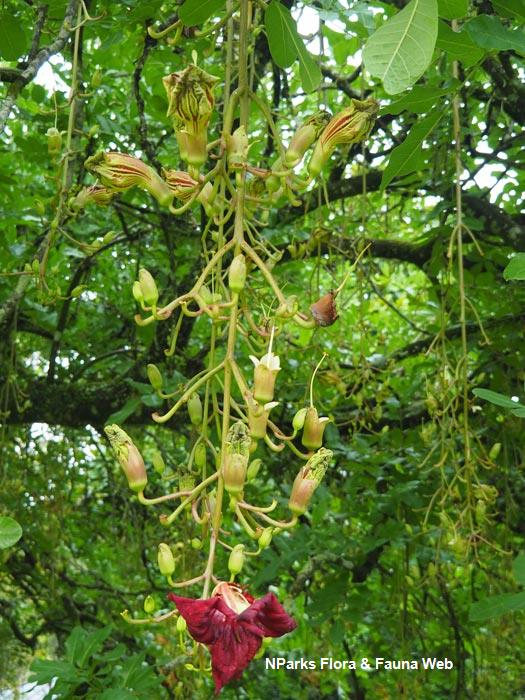
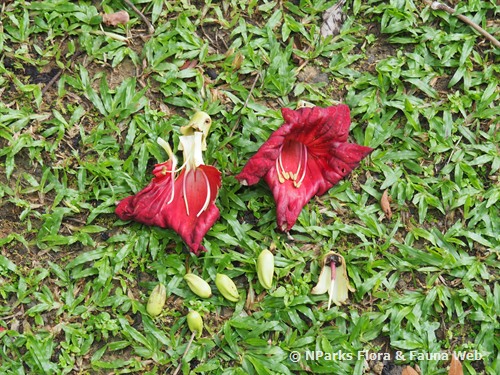
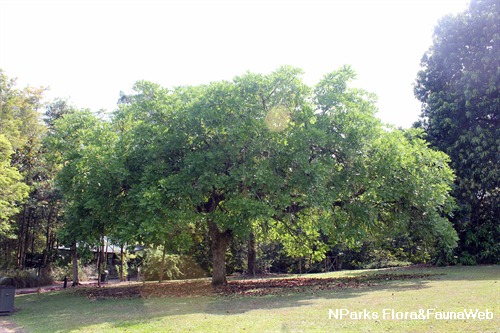
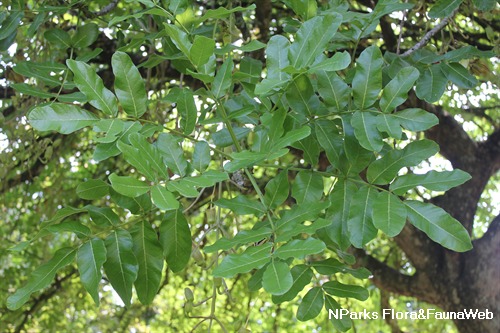
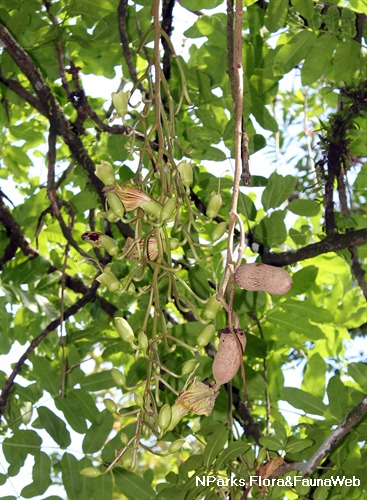
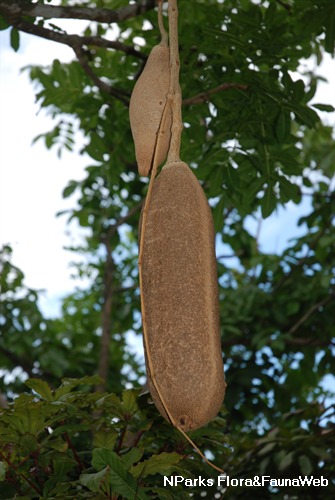
_lowres.jpg)